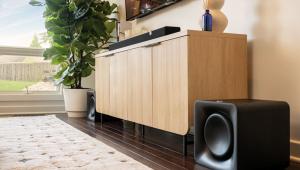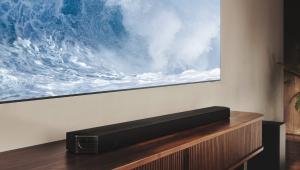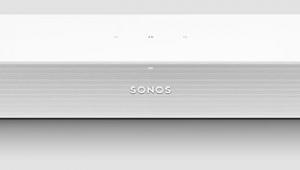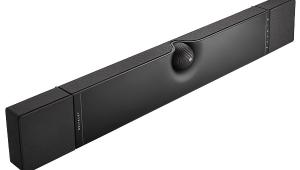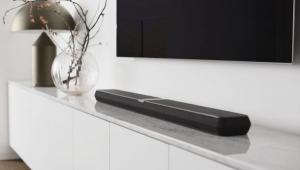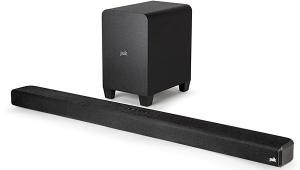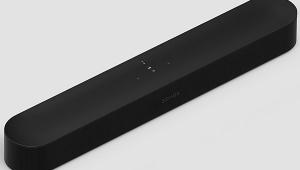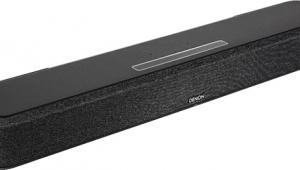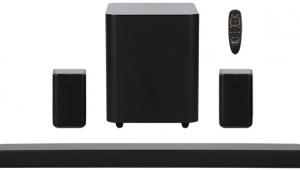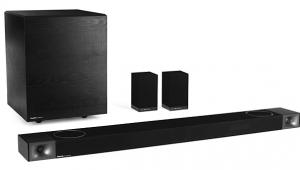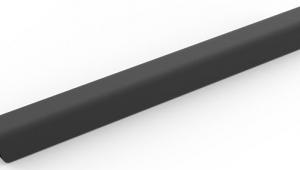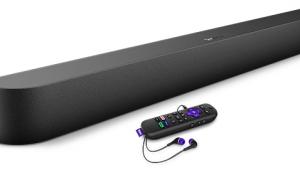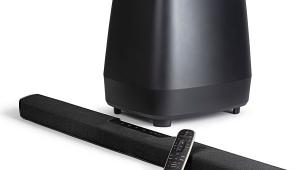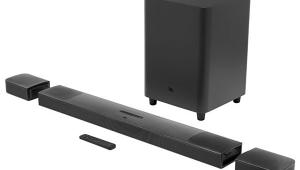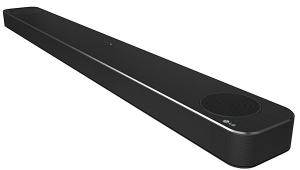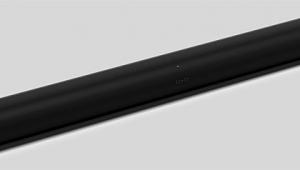Focal Dimension Soundbar System Review Page 2

Movies
From a subjective home-moviegoer perspective, film sound—presumably, the Dimension system’s prime target—was remarkable. The Focals delivered ample clean power and acoustic output for convincing home theater playback—not reference level, but a lot closer than several similarly costly soundbars I’ve experienced, and plenty for me. (Not surprisingly, the Dimension system seemed able to produce slightly higher peak levels on multichannel Dolby or DTS soundtracks than on stereo music.) Just as important, the Focals performed with broadband authority. Man of Steel, streaming from my cable system, made an ideal exemplar: big sound, plenty of surround action, and bitstream Dolby Digital (understanding, of course, that the Dimension decodes neither Dolby TrueHD nor DTS-HD Master Audio). Scenes with deeper bass rumbling, like the opening-door sequence toward the beginning of the movie, produced a much stronger foundation than on any unassisted soundbar I’ve heard, and this remained evident throughout the flick’s many ship blast-offs, crashes, and supersonic body-slams. To a critical ear weaned on big subs (with the goods to below 25 Hz), the lack of substantial output in the very lowest octave eventually became evident. Nevertheless, the Dimension’s genuine deep bass and lack of “soundbar boom” were signal virtues; less jaded listeners will find them nothing short of amazing.
As I’ve already mentioned, the Focal soundbar offers no listening-mode choices. If a surround bitstream arrives at its HDMI or optical digital inputs, the bar decodes it and reproduces it according to its fixed algorithms. The results at their best were excellent. Of course, the soundbar couldn’t create a fully three-dimensional surround bubble, but on the most surround-intensive scenes of a production like Man of Steel, it came amazingly close. The system produced considerable spread and reach of effects throughout the front hemisphere, up the side walls next to the listener and even a bit beyond, while maintaining fine clarity of dialogue and music.

As with most DSP-based surround virtualizations I’ve encountered, the net effect was highly dependent on listening position, and it was interactive this time with several of the bar’s setup switches, particularly Position and Room. Unsurprisingly, I encountered the strongest “surround” at the prime, centered position and optimal listening distance, which in my room turned out to be about 6 feet (but with the Distance switch on its furthest setting). I also found that the higher the volume, the more effective (and more enveloping) the surround.
With multichannel material, the Focal system gained a few solid decibels of level potential, which meant that the setup could play as loudly and cleanly as ever my tastes would reasonably desire—a first for a soundbar. With the subwoofer’s strong output and near-bottom-octave capabilities, the net result was a fully cinema-like experience: loud, dynamic, and immersive. It wasn’t equal to my everyday 5.1-plus layout, but it came arrestingly close for so compact and simplified a solution.
Ergonomics
Focal eschews the IR-remote “copying” scheme that most soundbars incorporate, which allows those bars to respond to commands from an existing TV or cable-box (or any other) remote, depending instead on HDMI-carried CEC (Consumer Electronics Control) to manage system integration. I’ve not had great luck implementing CEC in my system’s various iterations, perhaps because my coal-fired Samsung 52-incher is too old. In this case, the Dimension soundbar would turn off with the TV, but not back on, and the bar defaulted to its TV input—the return ARC audio from the TV’s HDMI connection—every time, which would make sense in an ARC-capable setup. Otherwise, you’re pretty much limited to the rather pokey credit-card remote supplied with the Dimension, which is certainly adequate. But assuming a TV-switched HDMI setup, in routine use the Dimension requires nothing more than volume adjustment, which theoretically CEC will effect from the TV remote.
For Bluetooth, Focal packages its own aptX-compatible outboard dongle with the soundbar. This worked fine, but it takes up the Dimension’s sole analog input, requires AC for its wall-wart power supply, and lacks any visual readout to aid in pairing (other than the dongle’s flashing LED, which will probably be hidden behind the soundbar).

Focal’s elegant, disappearing display on the bar’s right panel is sexy beyond debate, but thanks to its small size, it’s not very readable from more than a couple of yards away—other than as a telltale confirming, by lighting up, that remote commands are being received. Additionally, its touch controls are prone to turning the soundbar on or off, or changing inputs or volume settings unintentionally, if your leg (or your dog) brushes up against it.
As already noted, Focal elected to omit any user-adjustable day-to-day options other than bass (and a toggle for Dolby Digital’s Night mode). On one hand, I understand their position: The Dimension is a complete “B-chain” in and of itself, and if it’s as optimized as its designers could make it, tone or channel controls would only result in worse performance, not better. On the other hand, there are times every day when I might wish to change relative center-channel level; at lower volume settings, for example, some sports broadcasts’ surround-channel crowd sounds tended to overwhelm the announcers a bit (not that this was necessarily a bad thing!). And I dearly would have liked a subwoofer-level control to try to fine-tune bar-to-sub integration that last bit.
Nonetheless, Focal’s Dimension is a soundbar tour de force. It’s intelligently designed to take the three roles any bar must play—casual TV-sound provider, high-fidelity music system, and cinematic film-sound source—and balance them to a nicety, discharging all three obligations with high effectiveness and considerable grace. In concert with its dedicated subwoofer, the Dimension soundbar outdoes any other I know of in bass dynamics and extension, loudness, and overall impact, and assuming an under-TV soundbase layout, it does so without increasing its in-room footprint.
- Log in or register to post comments
